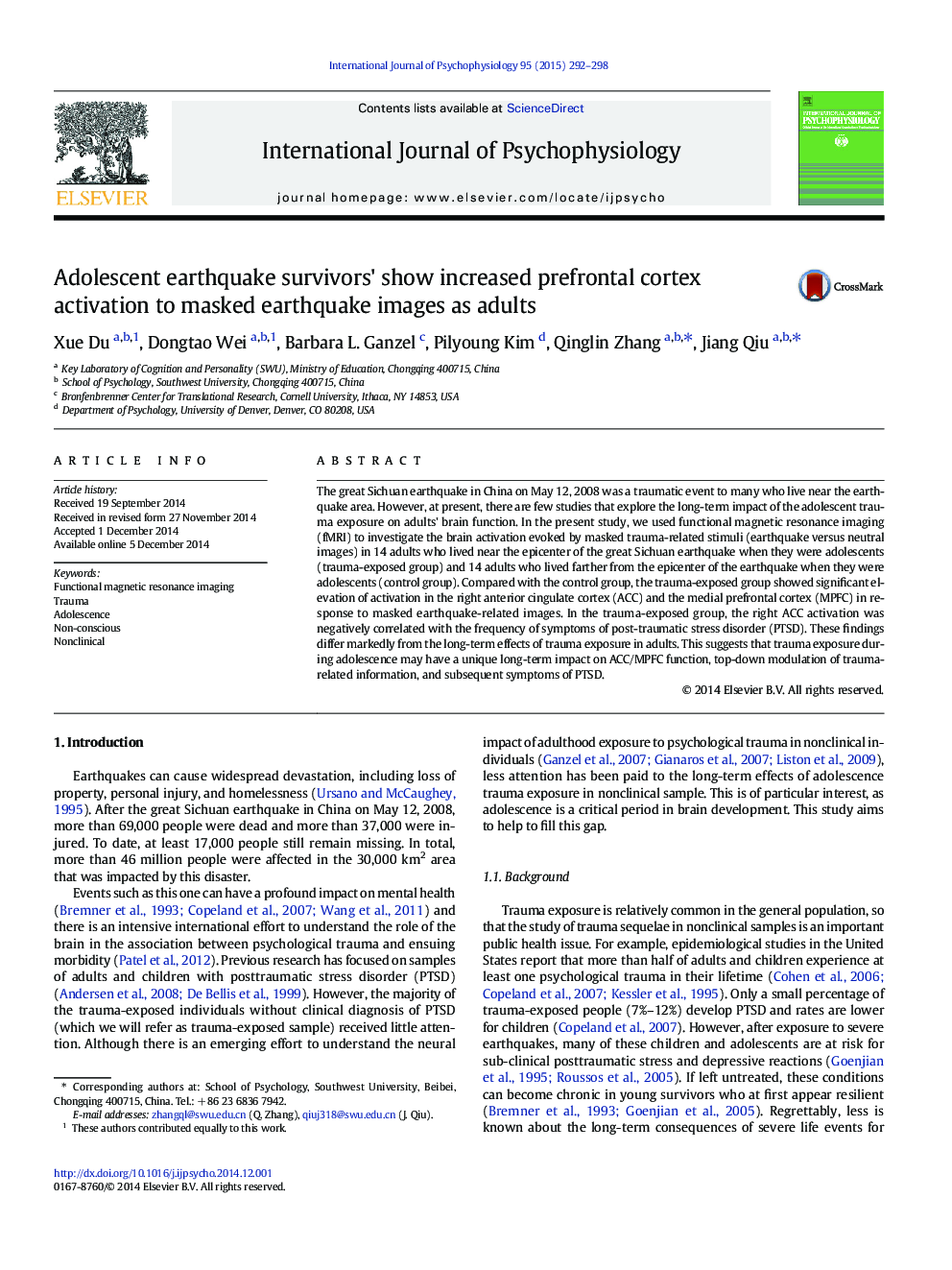| Article ID | Journal | Published Year | Pages | File Type |
|---|---|---|---|---|
| 7295458 | International Journal of Psychophysiology | 2015 | 7 Pages |
Abstract
The great Sichuan earthquake in China on May 12, 2008 was a traumatic event to many who live near the earthquake area. However, at present, there are few studies that explore the long-term impact of the adolescent trauma exposure on adults' brain function. In the present study, we used functional magnetic resonance imaging (fMRI) to investigate the brain activation evoked by masked trauma-related stimuli (earthquake versus neutral images) in 14 adults who lived near the epicenter of the great Sichuan earthquake when they were adolescents (trauma-exposed group) and 14 adults who lived farther from the epicenter of the earthquake when they were adolescents (control group). Compared with the control group, the trauma-exposed group showed significant elevation of activation in the right anterior cingulate cortex (ACC) and the medial prefrontal cortex (MPFC) in response to masked earthquake-related images. In the trauma-exposed group, the right ACC activation was negatively correlated with the frequency of symptoms of post-traumatic stress disorder (PTSD). These findings differ markedly from the long-term effects of trauma exposure in adults. This suggests that trauma exposure during adolescence may have a unique long-term impact on ACC/MPFC function, top-down modulation of trauma-related information, and subsequent symptoms of PTSD.
Related Topics
Life Sciences
Neuroscience
Behavioral Neuroscience
Authors
Xue Du, Dongtao Wei, Barbara L. Ganzel, Pilyoung Kim, Qinglin Zhang, Jiang Qiu,
